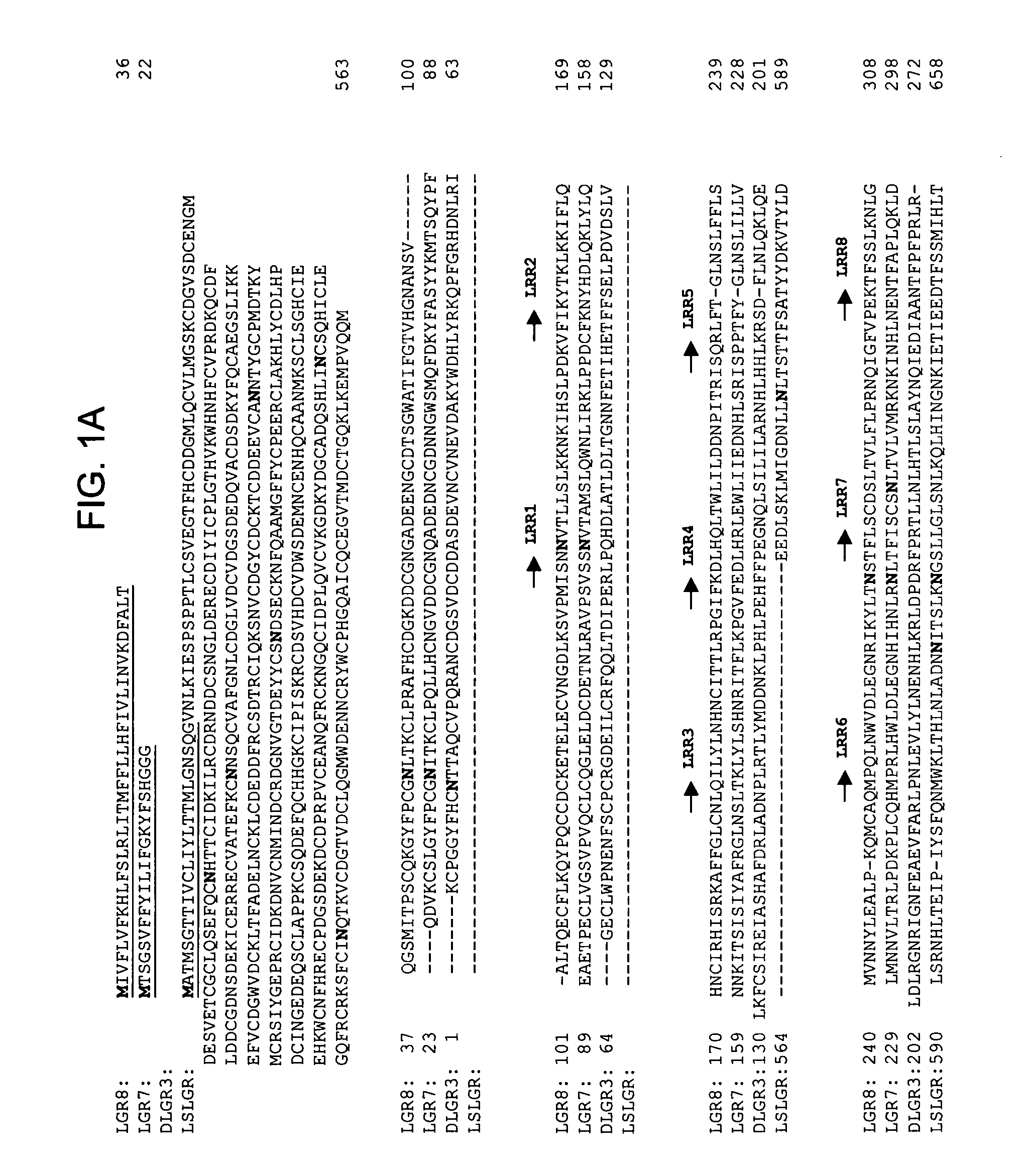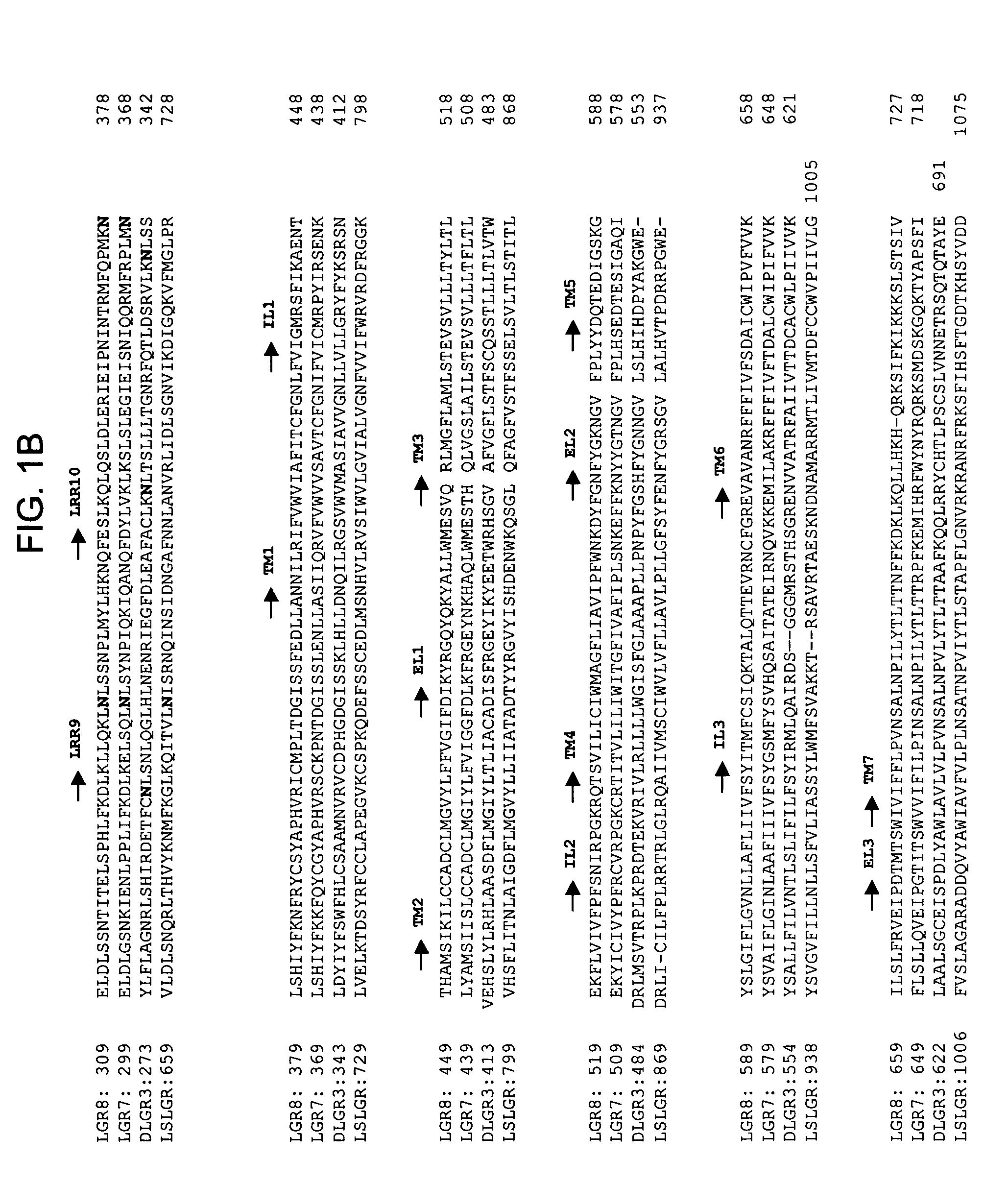Mammalian relaxin receptors
- Summary
- Abstract
- Description
- Claims
- Application Information
AI Technical Summary
Benefits of technology
Problems solved by technology
Method used
Image
Examples
example 1
[0105] Four orphan receptors, LGR4-7, have recently been isolated. These have structural features similar to those of the gonadotropin and thyrotropin receptors. Based on structural motifs and phylogenetic analysis, the orphan LGRs could be subdivided into two subgroups, with LGR4-6 as one group and LGR7 as another. Orthologous genes for each subgroup of LGR have been found in invertebrates. Similar to its snail and fly orthologs, human LGR7 has a unique N-terminal cysteine-rich LDL receptor-like domain preceding the multiple leucine-rich repeats found in the ectodomain of all other LGRs. Furthermore, constitutively active LGR7 mutants showing ligand-independent cAMP production were constructed based on gain-of-function point mutations found in the LH receptor of patients with male-limited precocious puberty.
[0106] A new human LGR is identified herein, which belongs to the same subgroup as LGR7 and is named LGR8 based on the chronological order of discovery. As shown in FIG. 1A, se...
example 2
[0123] INSL3, also known as Leydig insulin-like peptide or relaxin-like factor, is a relaxin family member expressed in testis Leydig cells and ovarian theca and luteal cells. Male mice mutant for INSL3 exhibit cryptorchidism or defects in testis descent due to abnormal gubernaculum development whereas overexpression of INSL3 induces ovary descent in transgenic females. Because transgenic mice missing the LGR8 gene are also cryptorchid, INSL3 was tested as the ligand for LGR8. Here, it is shown that treatment with INSL3 stimulated cAMP production in cells expressing recombinant LGR8, but not LGR7. In addition, interactions between INSL3 and LGR8 were demonstrated following ligand receptor cross-linking. Northern blot analysis indicated that the LGR8 transcripts are expressed in gubernaculum whereas treatment of cultured gubernacular cells with INSL3 stimulated cAMP production and thymidine incorporation. Demonstration of INSL3 as the ligand for LGR8 facilitates understanding of the ...
PUM
| Property | Measurement | Unit |
|---|---|---|
| Solubility (mass) | aaaaa | aaaaa |
| Affinity | aaaaa | aaaaa |
| Swelling volume | aaaaa | aaaaa |
Abstract
Description
Claims
Application Information
 Login to View More
Login to View More - R&D
- Intellectual Property
- Life Sciences
- Materials
- Tech Scout
- Unparalleled Data Quality
- Higher Quality Content
- 60% Fewer Hallucinations
Browse by: Latest US Patents, China's latest patents, Technical Efficacy Thesaurus, Application Domain, Technology Topic, Popular Technical Reports.
© 2025 PatSnap. All rights reserved.Legal|Privacy policy|Modern Slavery Act Transparency Statement|Sitemap|About US| Contact US: help@patsnap.com



